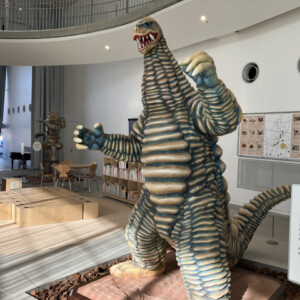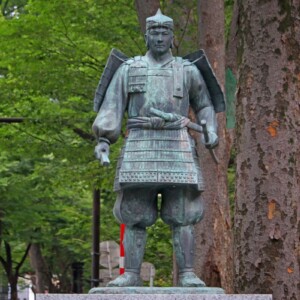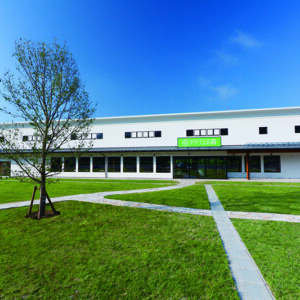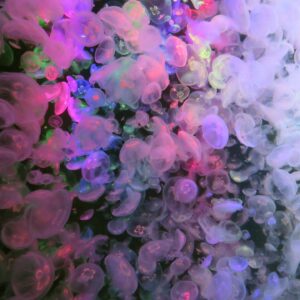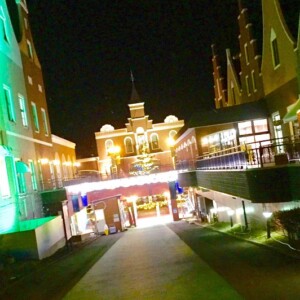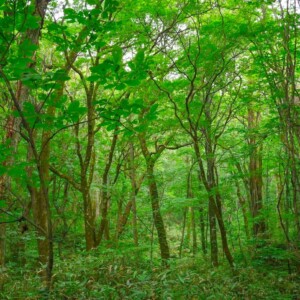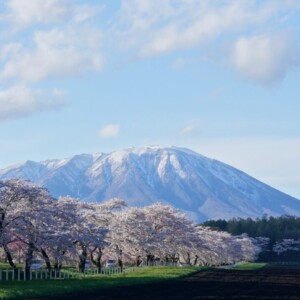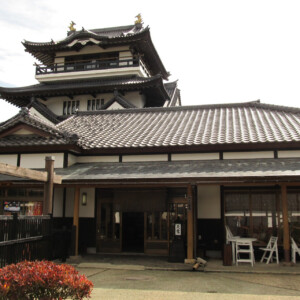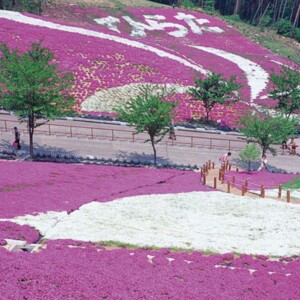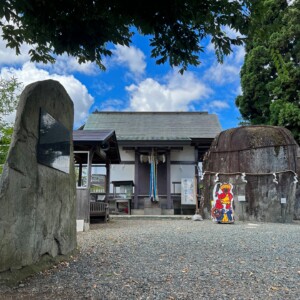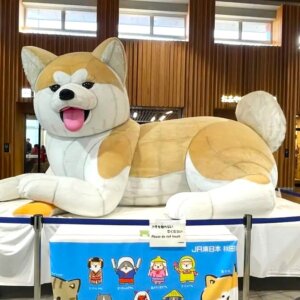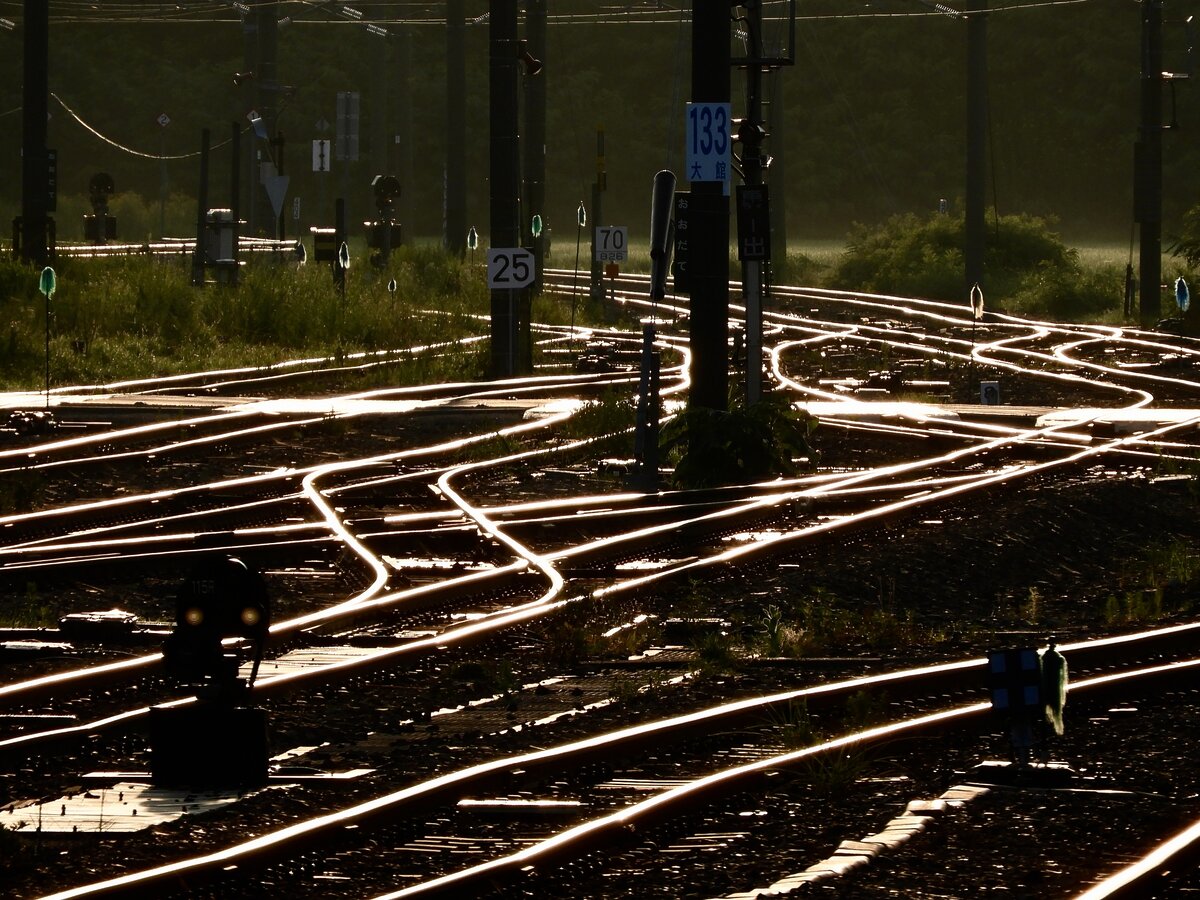
A train with a locomotive and passenger train! ? Trains with a strange formation [Aomori, Akita, Iwate]
table of contents
The main character of Japanese railways today can be said to be
trains In addition, on routes where electricity cannot be supplied to trains (non-electrified routes), " dietic vehicles " that run using diesel oil as fuel are used.
Meanwhile, although it has completely disappeared in recent years, in the JNR era before JR was established, trains that were powered by driving " locomotives " and unpowered " passenger cars " were also running everywhere. It was there.
Trains and diesel vehicles can be self-propelled, so there are only a few exceptions to commercial operation being pulled by a locomotive.
However, during the Japan National Railways era, trains with strange formations were run even at the time, where locomotives pull passenger cars and trains were connected behind them, and then they were pulled together. Ta.
The name is also a regular train, so there is no specific nickname, but the train number is a train called " 539 ".
Appearance of combined trains for passenger cars and diesel cars
The "Strange 539 Train" was born on the Tohoku Main Line in October 1968, during the so-called "Yong San Too schedule revision"
(539 is merely the number of trains, so "Not strange 539 Train") Is there before that).
Depart Morioka Station in Iwate Prefecture at 7:10 in the morning, go north on the Tohoku Main Line (this section is currently the Iwate Galaxy Railway Line), and at 7:53 at Numamiyauchi Station (now Iwate Numamiya Station). Arrived in minutes.
The train from the first train to the last train was 43 minutes, and the journey was 32km, making it a short-distance train at the time that was operated on major main trains.
Furthermore, a train number with only the number 539 indicates that this train is a passenger train that runs through by a locomotive.
Until we arrived at Koma Station at 7:36am on the way from Morioka Station, there was a train connected to train 539.
This train is called the 927D train, and when it arrived at Koma Station, it was separated from the 539 train, and after seeing off the 539 train departing from Koma Station at 7:40, it departs from Koma Station at 7:44. Enter the Hanawa Line and arrive at Odate Station in Akita Prefecture at 10:33.
The train number with D at the end indicates that it is a train by a diesel train.
Judging from the train numbers, trains 539 and 927D can only be seen as being a train where the trains where the locomotives tow the passenger cars and the diesel cars run together from Morioka Station to Koma Station along the way.
And in fact, that's true.
539 Train organization
The formation of 539 and 927D trains around 1978 was as follows.
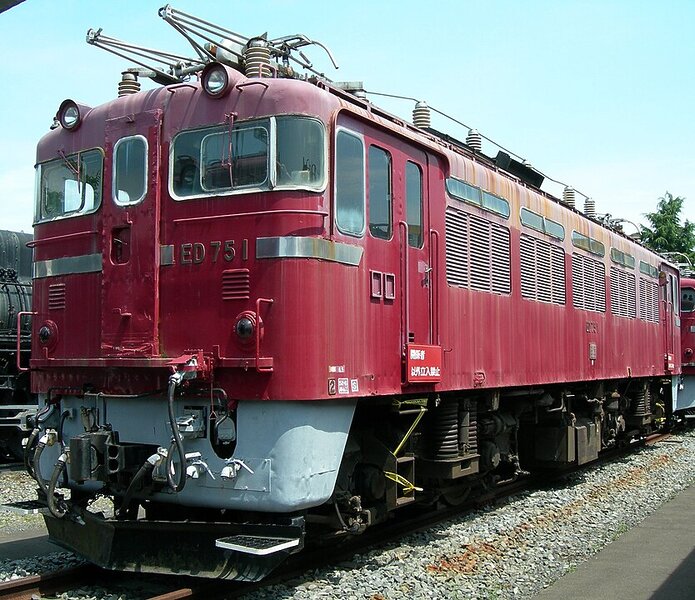
Rsa – copyrighted work by the author himself, CC Display-ShareAs 3.0,
by https://commons.wikimedia.org/w/index.php?curid=7399534
The first one is the ED75 electric locomotive.
This model could be said to be the main locomotive of the Tohoku region at the time, mainly on the Joban Line and Tohoku Main Line, which was widely used in towing from local trains to express trains and freight trains.
Behind the locomotive is followed by four passenger cars.
Swallow 42 type, Oha 47 type, Suha 43 type, and Ohafu 61 type were allocated.
Both are passenger cars called old passenger cars.
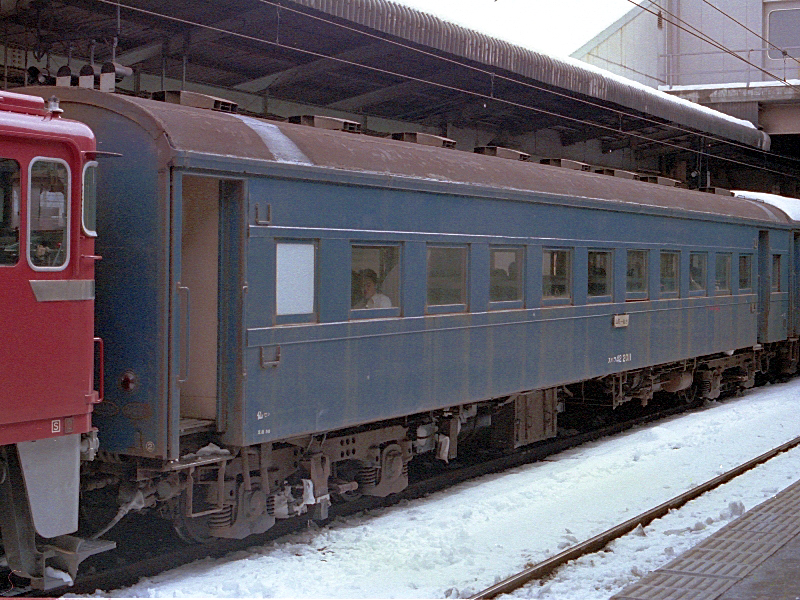
Carrier Deser Goichi - Works by the author himself, CC Display-ShareAs 3.0,
by https://commons.wikimedia.org/w/index.php?curid=93457207
This is the vehicle that goes directly from Morioka Station to Numiyauchi Station.
Behind the passenger car, three diesel cars were connected, which were originally capable of self-propelling and should not have to be pulled by a locomotive, and ran together to Koma Station along the way.
Diesel vehicles such as the Kiha 52 type, Kiha 55 type, and Kiha Uni 26 type were used.
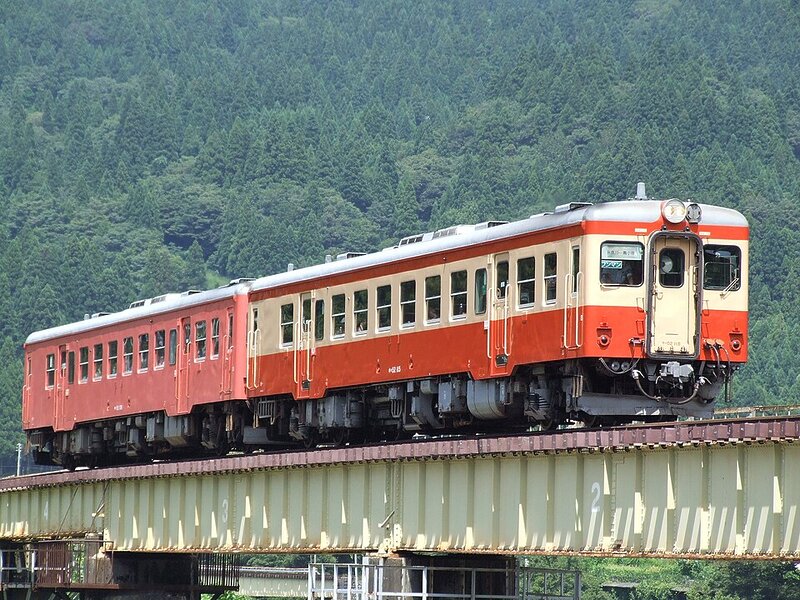
toshinori baba – copyrighted work by the author himself, public domain,
by https://commons.wikimedia.org/w/index.php?curid=4660868
The Kiha Uni 26 type is a vehicle that carries mail and packages in addition to passengers, and as a rule, Kiha Uni was connected to the back of this train.
In the section from Morioka Station to Koma Station (probably to supply electricity such as lighting), the engine of the railcars was running, but in the idling state, the leading locomotives were pulling together in both passenger cars. Ta.
It was the first time it had been self-propelled since it was disconnected from the 539 train at Koma Station, and was heading the Hanawa Line towards Odate Station as a 927D train.
Why was a strange train born?
As of 1968, regular trains on the Tohoku Main Line running in Iwate Prefecture were mainly operated by passenger cars.
On the other hand, most of the local trains on the Hanawa Line, except in the mornings and evenings, were operated by diesel cars.
So it's not particularly strange in itself that the 539 train is a passenger train and the 927D train is a diesel train.
However, even in the JNR era, when many trains that were unthinkable now were operated, it is said that there was no other train that was connected to a passenger train and diesel train, and operated in commercial operation. Masu.
Why were these two trains running halfway?
When two trains with different destinations are connected and run, the time spent occupying the tracks is shorter than the two trains running separately, making it easier to run more trains.
In fact, in the Tohoku region at the time, there were many trains that were run, mainly express trains, divided into two parts along the way, and that were interlocked and merged with two trains together to form one.
Some of the express trains, such as the Rikuchu, which connected Sendai Station in Miyagi Prefecture and Miyako Station in Iwate Prefecture (in some times to Akita Station in Akita Prefecture), are both the operation route and the division and annexation that takes place along the way. Because of the complexity of this, there were even trains that are still talked about today.
It is thought that the trains that combine passenger cars and diesel cars were also born in this way.
When the Tohoku Shinkansen had not yet opened, the Tohoku Main Line was a major route where local trains, express trains, and freight trains frequently traveled.
During the morning rush hour, it was more efficient to run the Tohoku Main Line local trains and the local trains that run directly from Morioka Station to the Hanawa Line from the Tohoku Main Line, or to run separately. It was decided that this was the case, so a train that ran in a strange formation was probably created that ran to Koma Station, where the Hanawa Line branches out.
The existence of a train that combines passenger cars and diesel cars was apparently well known among railway fans, and in his book "The Longest One-Way Ticket Journey," the late traveller, Miyawaki Shunzo, also wrote in 1978. It states that he was planning to ride and film.
However, the sleeper express train "Yuzuru" that I took to travel from Ueno Station in Tokyo to Morioka Station in the evening was delayed by nearly two hours, so trains 539 and 927D depart from Morioka Station at 7:11am The result was that they weren't able to make it in time at all.
As an aside, the cause of the delay of "Yuzuru" is the route of the Joban Line, which is also because the locomotive of the freight train broke down and closed the track for a long time. It was too unfortunate for him.
Still running locomotives + passenger car + railcars trains
It can be confirmed that the combined trains of passenger cars and diesel cars have disappeared in the November 1982 timetable.
The diesel train that runs directly from the Hanawa Line is a 1927D train that departs from Morioka at 7:10am and arrives in Odate at 10:30am, and is still in the same form as before the timetable revision, but the 539 train on the Tohoku Main Line is still in its entirety. It has disappeared, and a new passenger train called 529 has been set up at a nearby time, departing from Morioka at 7:04 and arriving in Kita-Fukuoka (now Ninohe) at 8:33.
This diamond revision was implemented with the full -scale opening of the Tohoku Shinkansen.
With the opening of the Shinkansen, it was decided that in the process of organizing the operations of parallel trains on the Tohoku Main Line, it was no longer necessary to operate in conjunction with a diesel train directly through the Hanawa Line.
However, trains still operate in which locomotives, passenger cars and diesel vehicles are connected for a completely different purpose.
This is a "stove train" operated by Aomori Prefecture's private railway, Tsugaru Railway, in winter, and as the name suggests, it is a train with a dalmastove burned inside the passenger car.
A separate stove train ticket is required to board a stove train, so for passengers who do not need a stove, the diesel cars used on regular trains are connected together with the passenger cars.
This is how the current strange train was born, with diesel locomotives, passenger cars and diesel cars connected
(they are not separated in the middle, like the Tohoku Main Line 539 train).
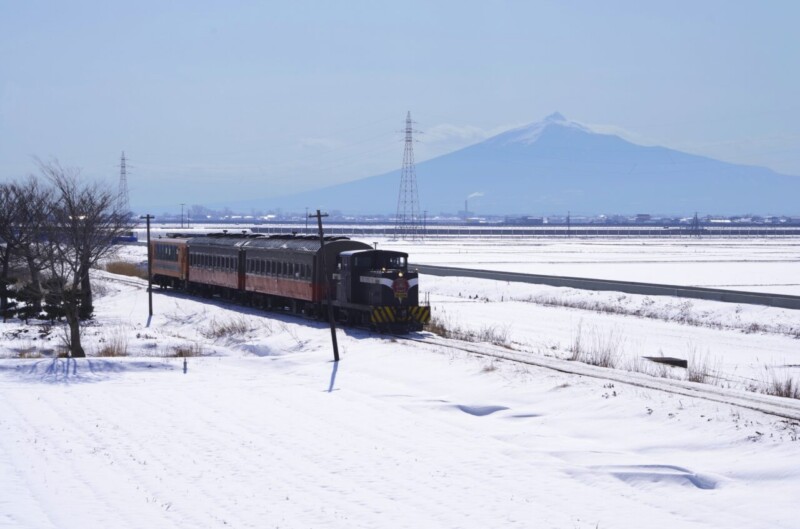
is a diesel locomotive, the following two cars are passenger cars, the last tail is a railway car
In recent years, the use of locomotives has been omitted, and stove trains have been operated with diesel cars leading passenger cars, but this is also a rare type of operation nationwide.
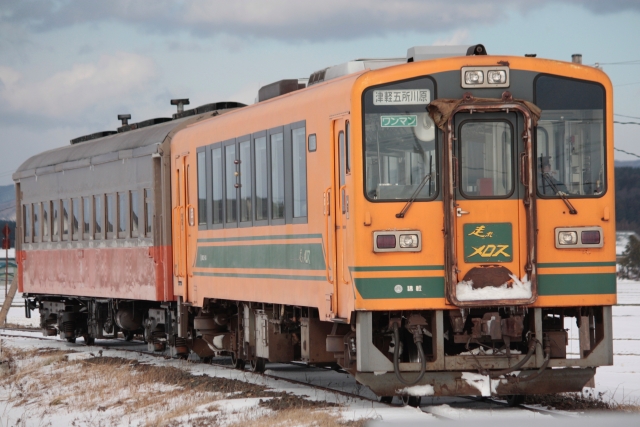
Please see this article for the charm of Tsugaru Railway.


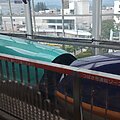



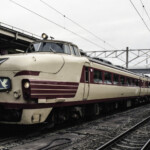
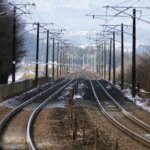
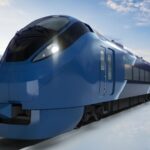
![The trajectory of the Joban Line express train "Hitachi", which has been at the mercy of the times but has played a role in connecting the Pacific coast of Tohoku [Miyagi Prefecture and Fukushima Prefecture] 28017333_l](https://jp.neft.asia/wp-content/uploads/2024/04/28017333_l-150x150.jpg)
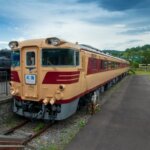
![Experience driving the trains that were actually running at the Kuriden Museum! [Miyagi Prefecture] Former Wakayanagi Station building](https://jp.neft.asia/wp-content/uploads/2024/02/2369429_m-150x150.jpg)
![The disappearing super local line "Nicchu Line" [Fukushima Prefecture] 04_MG_8461](https://jp.neft.asia/wp-content/uploads/2024/07/04_MG_8461-150x150.jpg)
